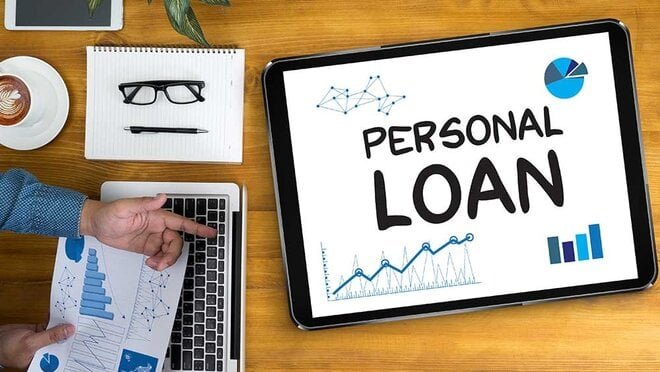How Personal Loan Interest Rates Work For Home, Car etc

Personal loans can be a great way to manage large expenses, consolidate debt, or cover emergencies. However, before taking a personal loan, it’s crucial to understand how the interest rates work. The interest rate determines how much extra money you will pay back in addition to the loan amount. This article explains the basics of personal loan interest rates, their types, factors influencing them, and tips to manage them effectively.
A personal loan is borrowed money that you repay over time with interest. The interest rate is essentially the cost of borrowing. It’s expressed as a percentage of the loan amount and determines how much you will pay in addition to the original loan, also called the principal.
Personal loans are a versatile financial tool that can help you achieve various goals, such as consolidating debt, funding home improvements, covering medical expenses, or managing unexpected emergencies. However, the interest rate is one of the most critical aspects to consider before taking out a personal loan. The interest rate directly impacts the total cost of the loan, your monthly payments, and, ultimately, your financial well-being.
Understanding how personal loan interest rates work is essential for making informed borrowing decisions. From fixed and variable interest rates to the factors that lenders evaluate when determining your rate, having a clear picture can empower you to choose the right loan that fits your financial situation. In this article, we will break down the mechanics of personal loan interest rates, explain the types of rates available, and explore the factors that influence them, ensuring you are equipped with the knowledge to navigate the loan market confidently.
Whether you’re a first-time borrower or looking to refinance an existing loan, this guide will demystify personal loan interest rates, helping you make smarter financial choices and save money over time.
Understanding Personal Loan Interest Rates
Personal loan interest rates are a critical factor that determines how much a borrower will ultimately pay for their loan. These rates represent the cost of borrowing money, expressed as a percentage of the loan amount. Lenders typically present this as an Annual Percentage Rate (APR), which not only includes the interest rate but also incorporates any additional fees associated with the loan. This ensures that borrowers have a clear picture of the total borrowing cost.
Types of Personal Loan Interest Rates
There are two primary types of personal loan interest rates: fixed and variable. Fixed interest rates remain constant throughout the loan term, ensuring predictable monthly payments. This stability makes it easier for borrowers to budget effectively. On the other hand, variable interest rates fluctuate based on changes in market benchmarks, such as the prime rate. While variable rates may start lower, they carry the risk of increasing over time, potentially leading to higher monthly payments.
How Interest Rates Are Calculated
The calculation of personal loan interest depends on factors like the loan amount, the loan term, and the interest rate itself. For example, a larger loan amount or a longer loan term typically results in higher total interest costs. Most lenders use a simple interest formula, which calculates interest only on the principal amount. However, some loans may use compound interest, which considers both the principal and previously accrued interest, leading to a higher overall cost.
Factors That Influence Personal Loan Interest Rates
Lenders assess various factors to determine the interest rate offered to borrowers. One of the most significant is the borrower’s credit score. A higher credit score often translates to a lower interest rate, as it indicates a history of reliable repayment. Additionally, lenders consider income stability and employment history, as these factors demonstrate a borrower’s ability to repay the loan. The debt-to-income (DTI) ratio also plays a role; a lower DTI suggests good financial health and may result in more favorable rates. Furthermore, market conditions, such as inflation and central bank policies, can influence the overall interest rate environment.
The Impact of Simple vs. Compound Interest
The type of interest applied to a personal loan—simple or compound—affects the total borrowing cost. Simple interest is calculated only on the original loan amount and results in lower costs over time. In contrast, compound interest includes previously accrued interest in its calculations, which can significantly increase the total repayment amount. Borrowers should carefully review their loan agreements to understand the type of interest applied.
The Loan Application Process
Applying for a personal loan involves a series of steps that ensure you secure the right loan for your financial needs. The process requires careful preparation, from assessing your eligibility to submitting your application and receiving funds. Here’s a step-by-step guide to help you navigate the loan application process smoothly.
1. Evaluate Your Financial Needs
Before starting the application process, it’s essential to determine why you need the loan and how much you require. Over-borrowing can lead to unnecessary financial strain, while under-borrowing might not fulfill your needs. Assess your expenses and create a detailed plan for how the funds will be used to avoid borrowing more than necessary.
2. Check Your Credit Score and Financial Health
Your credit score plays a significant role in determining whether you qualify for a personal loan and the interest rate you’ll receive. Before applying, check your credit report for errors and work on improving your score if necessary. Paying down outstanding debts, reducing your credit utilization, and making timely bill payments can boost your creditworthiness.
3. Research Lenders and Compare Loan Offers
Take time to explore various lenders, including banks, credit unions, and online lending platforms. Each lender has different eligibility criteria, interest rates, and terms. Compare these factors to find a loan that fits your financial situation. Use tools like APR calculators to understand the total cost of borrowing and prioritize lenders offering transparent terms and competitive rates.
4. Gather Necessary Documentation
Most lenders require specific documents to verify your identity, income, and financial stability. Commonly requested documents include:
- Government-issued ID (e.g., passport or driver’s license)
- Proof of income (pay stubs, tax returns, or bank statements)
- Employment details (letter from employer or employment contract)
- Proof of address (utility bills or lease agreement)
Having these documents ready can speed up the application process.
5. Prequalify for a Loan
Many lenders offer a prequalification process that allows you to check your eligibility without impacting your credit score. Prequalification provides an estimate of the loan amount, interest rate, and terms you may qualify for. This step helps you compare multiple loan options without committing to a hard credit inquiry.
6. Submit Your Loan Application
Once you’ve chosen a lender and loan offer, complete the application form. You’ll need to provide personal information, details about your employment and income, and the desired loan amount and term. Double-check your application for accuracy to avoid delays or potential rejection.
7. Wait for Approval
After submitting your application, the lender will review your credit history, financial information, and supporting documents. This process may take anywhere from a few minutes to several days, depending on the lender. Some online lenders offer same-day approvals, while traditional banks may take longer.
8. Review the Loan Agreement
If approved, you’ll receive a loan agreement outlining the terms and conditions, including the interest rate, loan term, repayment schedule, and any fees. Carefully review the agreement to ensure you understand the total cost of the loan and your obligations. If anything is unclear, ask the lender for clarification before signing.
9. Accept the Loan Offer and Receive Funds
Once you’re satisfied with the loan terms, sign the agreement to accept the offer. Depending on the lender, funds may be disbursed directly into your bank account within a few hours or a few days. Some lenders may also offer direct payment to creditors if you’re consolidating debt.
10. Manage Your Loan Responsibly
After receiving the funds, ensure that you stick to the repayment schedule outlined in the loan agreement. Set up automatic payments to avoid missing due dates and incurring penalties. Responsible loan management helps build your credit score and ensures financial stability.
By following these steps, you can simplify the loan application process and secure a personal loan that aligns with your needs and goals. Always take time to research, prepare, and review terms to ensure a smooth borrowing experience.
Tips for Securing Lower Interest Rates
Securing a personal loan with a low-interest rate can significantly reduce the total cost of borrowing. Lower rates mean smaller monthly payments and less financial strain over the loan term. While lenders determine interest rates based on various factors, there are actionable steps you can take to improve your chances of qualifying for a better rate. Here’s a detailed guide to help you achieve that goal.
1. Improve Your Credit Score
Your credit score is one of the most critical factors lenders use to determine your interest rate. A higher score indicates that you are a reliable borrower, which often translates into lower interest rates. To improve your score:
- Pay all bills on time, as payment history carries significant weight.
- Reduce your credit card balances to lower your credit utilization ratio.
- Avoid opening new credit accounts unnecessarily, as this can result in hard inquiries that temporarily lower your score.
- Regularly check your credit report for errors and dispute any inaccuracies.
2. Compare Lenders and Loan Offers
Interest rates vary significantly among lenders, so shopping around can help you find the best deal. Compare rates from banks, credit unions, and online lenders. Use tools like prequalification checks to see potential offers without affecting your credit score. Consider working with a lender that specializes in low-interest loans or offers rate discounts for specific borrower profiles.
3. Opt for a Shorter Loan Term
The length of your loan term can impact the interest rate. Short-term loans typically come with lower rates because lenders face less risk over a shorter repayment period. While the monthly payments may be higher, the overall interest cost is often significantly lower. Choose a loan term that balances affordability with minimizing total costs.
4. Demonstrate Stable Income and Employment
Lenders assess your ability to repay the loan by reviewing your income and employment history. A stable income stream and long-term employment can make you a more attractive borrower, potentially leading to lower rates. If possible, provide evidence of job stability or recent income growth when applying for a loan.
5. Lower Your Debt-to-Income (DTI) Ratio
Your debt-to-income ratio reflects the portion of your income that goes toward debt repayment. A lower DTI ratio indicates better financial health and reduces perceived risk for lenders. To lower your DTI:
- Pay off existing debts, especially high-interest credit card balances.
- Avoid taking on new debts before applying for a personal loan.
- Increase your income through additional work or side gigs if possible.
6. Offer Collateral for a Secured Loan
If you’re comfortable doing so, applying for a secured personal loan can help you secure a lower interest rate. With secured loans, you provide an asset, such as a car or savings account, as collateral. This reduces the lender’s risk, making them more likely to offer favorable terms. However, ensure that you’re prepared to repay the loan, as defaulting could result in losing the collateral.
7. Leverage Discounts and Special Offers
Some lenders provide interest rate discounts for specific actions, such as setting up automatic payments or being an existing customer. Check if the lender offers loyalty programs or reduced rates for meeting certain conditions. These small percentage reductions can add up to substantial savings over the loan term.
8. Time Your Application Strategically
Interest rates can be influenced by broader economic conditions. During periods of lower benchmark rates set by central banks, lenders may offer more competitive personal loan rates. Timing your application during these periods could help you lock in a lower rate.
9. Consider a Co-Signer
If your credit profile or financial situation isn’t strong enough to qualify for a low rate, having a co-signer with excellent credit can help. A co-signer provides additional assurance to the lender, which may result in better loan terms. Be sure both parties understand the responsibilities involved, as the co-signer is equally liable for the loan repayment.
10. Negotiate with Lenders
Don’t hesitate to negotiate with lenders, especially if you have a strong credit profile or competing loan offers. Some lenders may be willing to lower their rates to secure your business. Use your prequalified offers or a history of reliable financial behavior as leverage in discussions.
Securing a lower interest rate on a personal loan requires a combination of financial preparation, market research, and smart decision-making. By improving your credit score, managing your debts effectively, and comparing loan options, you can significantly reduce borrowing costs. Taking the time to implement these strategies can save you money and make your personal loan more affordable in the long run.
Factors That Affect Personal Loan Interest Rates
Credit Score
Your credit score is one of the most critical factors. A high credit score shows you are reliable with payments, leading to lower rates.
| Credit Score Range | Impact on Interest Rates |
|---|---|
| 750 and above | Lowest rates |
| 700-749 | Competitive rates |
| 650-699 | Average rates |
| Below 650 | High rates or rejection |
How Personal Loan Interest Rates Are Calculated
Simple Interest
Simple interest is calculated only on the loan’s principal.
Formula:
Simple Interest=Principal×Rate×Time\text{Simple Interest} = \text{Principal} \times \text{Rate} \times \text{Time}
For example:
If you borrow $10,000 at a 5% annual interest rate for 3 years:
10,000×0.05×3=1,50010,000 \times 0.05 \times 3 = 1,500
You will pay $1,500 in interest.
Compound Interest
Compound interest considers both the principal and the accumulated interest. While less common for personal loans, it can significantly increase costs.
APR (Annual Percentage Rate)
APR includes the interest rate and any additional fees, giving a more accurate picture of the loan’s cost. Always compare loans using APR instead of just the interest rate.
Why Interest Rates Matter
- Total Cost: High interest rates can make loans much more expensive.
- Monthly Payments: A lower rate means smaller monthly payments, easing financial pressure.
- Loan Approval: Understanding rates helps you pick offers you are likely to get approved for.
Tips for Getting a Lower Interest Rate
- Improve Your Credit Score: Pay bills on time, reduce debts, and check your credit report for errors.
- Shop Around: Compare offers from banks, credit unions, and online lenders.
- Consider a Cosigner: A cosigner with a strong credit profile can help you secure lower rates.
- Negotiate: Ask lenders if they can lower the rate, especially if you have good credit.
- Choose a Shorter Loan Term: Shorter loans often come with lower interest rates.



